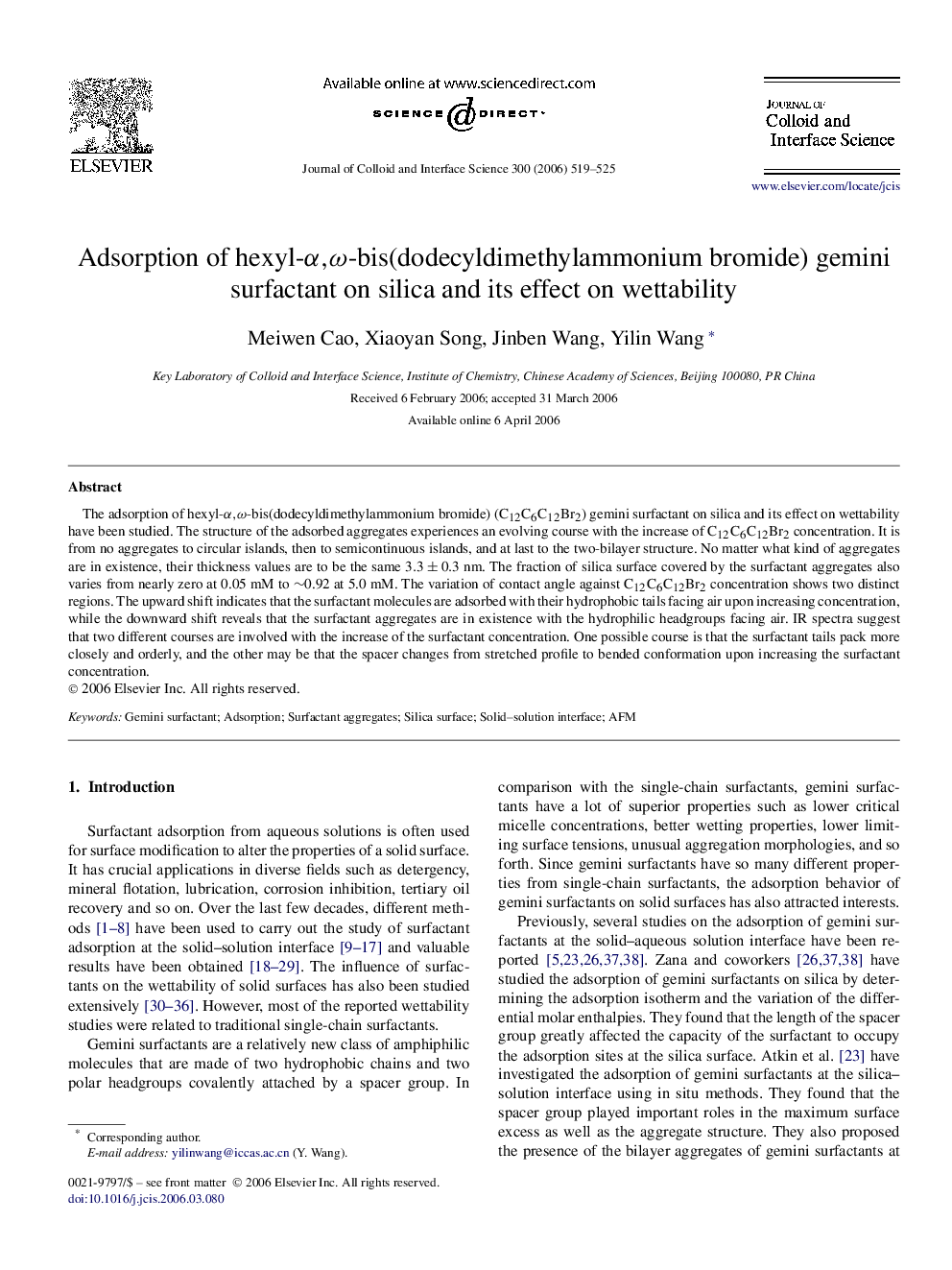| Article ID | Journal | Published Year | Pages | File Type |
|---|---|---|---|---|
| 612988 | Journal of Colloid and Interface Science | 2006 | 7 Pages |
The adsorption of hexyl-α,ωα,ω-bis(dodecyldimethylammonium bromide) (C12C6C12Br2) gemini surfactant on silica and its effect on wettability have been studied. The structure of the adsorbed aggregates experiences an evolving course with the increase of C12C6C12Br2 concentration. It is from no aggregates to circular islands, then to semicontinuous islands, and at last to the two-bilayer structure. No matter what kind of aggregates are in existence, their thickness values are to be the same 3.3±0.3 nm3.3±0.3 nm. The fraction of silica surface covered by the surfactant aggregates also varies from nearly zero at 0.05 mM to ∼0.92 at 5.0 mM. The variation of contact angle against C12C6C12Br2 concentration shows two distinct regions. The upward shift indicates that the surfactant molecules are adsorbed with their hydrophobic tails facing air upon increasing concentration, while the downward shift reveals that the surfactant aggregates are in existence with the hydrophilic headgroups facing air. IR spectra suggest that two different courses are involved with the increase of the surfactant concentration. One possible course is that the surfactant tails pack more closely and orderly, and the other may be that the spacer changes from stretched profile to bended conformation upon increasing the surfactant concentration.
Graphical abstractFigure optionsDownload full-size imageDownload as PowerPoint slide
